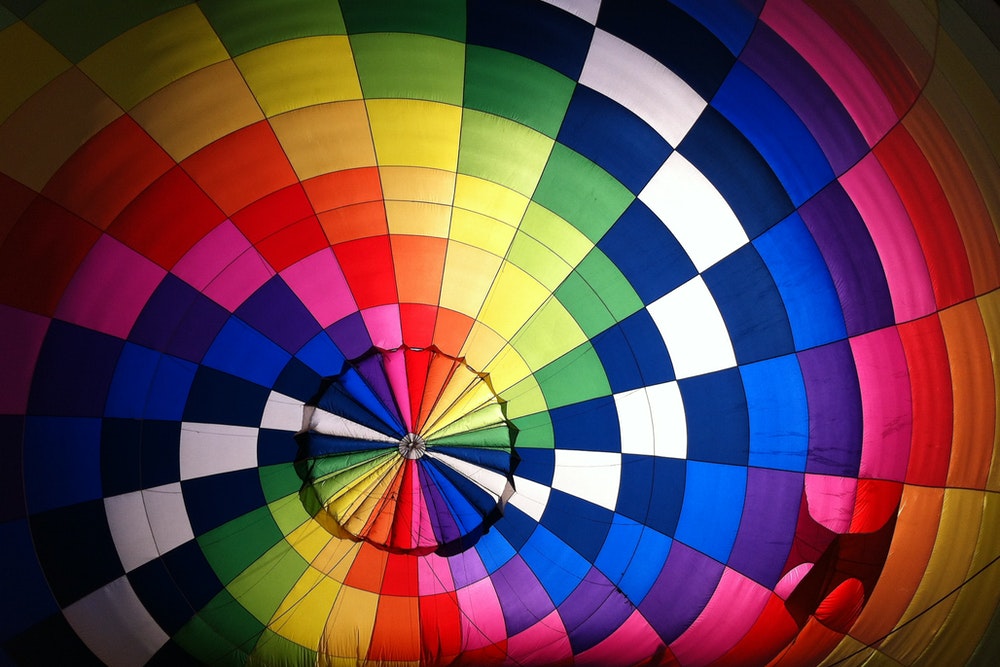Creative Methods to Use Colours In Photography

Colours are something that we see almost everywhere. If you leave some of the abstract things like feelings, etc. almost every other thing that you have perceived is in terms of colours. As photography is all about capturing the moments, colours have quite an important role to play.
Learning the right way to use colour in photography the right way is something worth learning. Understanding more about the impact of colours in photography will help you a lot in case you are a beginner.
Colour is something that may make or break the quality of your photo. You can use colours to tell stories. The incorporation of colours in the photograph is something you may use to combine your style into the art of photography.
It might be a little difficult to come up with effective ideas in this field but we have gathered a list of a few tips that is enough to give you the initial push. So, let us get this list started without further delay.
Use colour as the primary subject
We are talking about the use of colours in photography. So, there is nothing wrong with using colours as the subject. If you look around, you will find several important things associated with it. Different brands have associated themselves with colours when it comes to branding.
Getting started with it is really easy. All you have to do here is focus on colour first. Look for the colour that you want to be the subject. Then you will have to choose the other elements worth including around the colour.
The main point of this photograph lies in the initiation point which is always some colour. Once you get out with your camera, you will find a lot of such things in real-world objects. It all starts with an idea.
Want to earn money from your hobby?Sign up free as a Stockphoto.com contributor today!
|
Know about the colour wheels
This is usually the first step toward learning about colours. Whether you talk about colour composition or the basics of colour theory, the colour wheel is the perfect place to get started.
The random use of colours will never be able to create appealing photos. In order to bring joy and vibrance to your photos, you have to use colour in photography in a balanced way and the colour wheel is highly helpful in this case.
Things like colour wheels that people use for organising colours have been around for a long time. The most popular ones in this category include Goethe’s and Newton’s colour wheels. A colour wheel is simply an arrangement of colours in which each colour combines with its neighbour to create the next colour.
The primary colours i.e. red, yellow, and blue serve as the basis of the colour wheel. As always, breaking the rules during the time of creating exceptional photos is not prohibited, you can do that when you are looking for the right use of colour in photography.
Just like choosing the right camera lens, it should be a calculated decision, not a random one. There is a large number of colour schemes that you might opt for in this case i.e. analogous, complementary, etc.
Learn the use of cool and warm colours
Many photographers don’t stand under the same roof while defining these colour types. Generally, blue, green, and magenta-like colours are called cool colours while orange, red, yellow, etc. fall under the category of warm colours. Including both these colours in the same frame creates a unique and appealing contrast that makes the photo stand out.
There is a whole range of colours you can choose in this case. Have a careful look at the colour wheel. The colours that are farther away from each other will complement each other for this effect. Following this tip will help you a lot in choosing the right colours if you are confused about the concept of cool and warm colours.

Bring out the emotions from colours
Colours have a very intense connection with human emotions. The way blue colour brings positivity. Unlike that, people perceive the intense red colour as something alarming in various cases.
You can use colour in photography wisely to express emotions through the photos. But your message will be misunderstood by the viewers if you don’t have enough knowledge about the colours. Here is a brief list to make you aware of it.
- Purple - Luxury, comfort, spirituality
- Green - Calm and balanced, natural
- Red - Passion, anger, excitement
- Yellow - Cheerfulness, creativity
- Blue - Trust, cold, serenity
It is not necessary to use these colours only if you want to express some emotion. You can also use a combination of these colours in order to express a particular emotion.
The point is, you can use colours alone for this purpose as well. Apart from that, you can also incorporate certain colours with your subject for creating such effects.
Make the right use of time and climate
You are not limited to synthetic colours only if you want to use colour in photography. Nature is composed of vivid and vibrant colours. Making the right use of natural elements will bring joy and authenticity to your photos.
The best time to do it is during the golden hours. It is when the sun starts to rise in the morning to sunset. During both these time durations, the pleasant golden light is not very harsh as it is usually in the daytime.
Whenever you find a white cloud cover all over, take it as the perfect opportunity. This cloud cover works as a softbox and the warm exposure is able to make your photos highly pleasant.
In case you want more alive and vivid colours in the frame, you have to try photography on a bright sunny day. That would also give you immense opportunities to play with the blue light.
Photographers! Earn a $200 Sign up Bonus... |
|---|
Interested? Sign-up here(more details) |
Final thoughts
The skill to use colour in photography is highly important for taking creative photos. This is something that lets you produce images that are far from conventional pictures. There is a lot to explore in the world of capturing colours.
Now that you know the initials, it is time to get started.
About the Author
Andrew Conway is an amateur photographer and keen writer. Andrew is in his last year of his Journalism degree in University.


